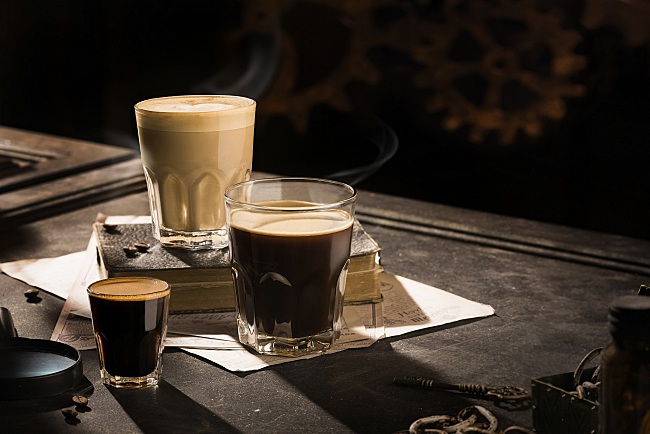Taste the True Quality with Recently Roasted SOE Single Origin Espresso
Taste the True Quality with Recently Roasted SOE Single Origin Espresso
Blog Article
Understanding Coffee Beans: the Trip From Coffee to Blended Coffee Beans

The Beginnings of Coffee: An International Point Of View
While you may believe of coffee as a contemporary staple, its origins trace back centuries, intertwining with societies across the globe. The tale begins in Ethiopia, where tale states a goat herdsman called Kaldi discovered the stimulating results of coffee beans after discovering his goats romping vigorously after eating them.
As profession paths broadened, coffee made its means to Europe in the 17th century, quickly getting popularity. Each culture included its one-of-a-kind spin to coffee prep work, improving its background.
Farming and Harvesting of Coffee Beans
As coffee's trip progressed, the emphasis moved to the growing and harvesting of certain bean ranges, especially those utilized for espresso. You'll find that espresso beans commonly originate from Arabica or Robusta plants, each offering unique tastes. The excellent expanding problems include high altitudes and rich, well-drained dirt, which enhance the beans' high quality.
Throughout the harvest, selecting techniques vary. In some regions, workers hand-pick ripe cherries, guaranteeing only the finest fruit goes to handling. In various other areas, mechanical farmers are made use of, specifically on bigger farms. Timing is crucial; you wish to gather when the cherries reach peak ripeness for maximum flavor.
Once harvested, the beans are gotten ready for handling, which is vital in establishing their final preference. Recognizing the cultivation and harvesting procedures offers you understanding right into what enters into your favorite coffee, enriching your appreciation for each and every mug.
Handling Methods: From Cherry to Bean
Currently that you have actually discovered collecting espresso beans, let's check out how those cherries change right into the coffee beans you enjoy. You'll see just how different harvesting techniques impact flavor, followed by the vital actions of fermentation and drying out. We'll damage down the milling and grading process that determines your coffee's high quality.
Gathering Strategies Clarified
When it comes to coffee, recognizing harvesting methods is important, since they directly impact the taste and quality of the beans you take pleasure in. Discerning selecting entails hand-picking just ripe cherries, guaranteeing you get the finest high quality beans. Inevitably, the selection of collecting technique can substantially affect your coffee experience, so it's worth understanding exactly how those beans made it to your mug.
Fermentation and Drying Out
After gathering, the following actions in processing coffee beans play a substantial function fit their taste. You'll locate that fermentation is essential, as it helps break down the mucilage bordering the beans, boosting their preference profile. Depending upon the approach, this procedure can last from a few hours to a number of days, with differing results based upon temperature level and humidity.
When fermentation is full, drying follows, which is equally crucial. You can select from sun-drying or mechanical drying approaches. Sun-drying permits the beans to soak up tastes from the setting, while mechanical drying guarantees regular dampness degrees no matter of climate. Proper drying is necessary to prevent mold and mildew and maintain the beans' quality, eventually influencing your cup of coffee.
Milling and Grading Process
As fermentation and drying set the phase for flavor advancement, the milling and grading process guarantees that just the best coffee beans make it to your mug. This phase involves removing the external layers of the coffee cherry, including the parchment and husk. Top quality beans get a greater quality, resulting in a richer coffee experience.
Toasting Techniques: Unlocking Flavor Prospective
When you roast coffee beans, the method you pick can substantially affect the taste account. Understanding the relationship between time, temperature, and toasting techniques is crucial to revealing the capacity of your brew. Let's check out exactly how these aspects integrated to create the best mug.
Toasting Approaches Discussed
While you may believe that all coffee roasting approaches yield the very same outcomes, the fact is that each method exposes one-of-a-kind flavor capacities in the beans. Drum roasting utilizes a turning drum to equally distribute warmth, enhancing caramelization and generating a balanced flavor. Air roasting, on the other hand, flows warm air around the beans, advertising a lighter roast with pronounced level of acidity.

Influence On Taste Profile
Various toasting approaches not just affect the process yet additionally substantially influence the taste profile of the coffee beans. When you pick a light roast, you'll experience brilliant level of acidity and floral notes, showcasing the bean's beginning. On the other hand, a tool roast equilibriums level of acidity with sweetness, often disclosing chocolatey undertones. Dark roasts, on the other hand, draw out strong, great smoky tastes, occasionally masking the bean's special features. Each technique reveals different oils and substances, bring about a wide variety of flavors. By exploring with different roasting designs, you can find browse around this site which accounts reverberate with your palate. Recognizing these nuances aids you value the virtuosity behind your mug of coffee, boosting your total experience with every sip.
Time and Temperature Level Elements
To release the complete taste capacity of coffee beans, both time and temperature level during the toasting procedure play significant roles. When roasting, you'll discover that greater temperatures can swiftly develop flavors, but if you hurry it, you may wind up with scorched notes. Alternatively, lower temperature levels permit for an extra steady taste growth, showcasing the beans' one-of-a-kind characteristics.

Timing is simply as important; prolonging the roast too long can bring about a loss of level of acidity and brightness, while as well short a roast might leave the beans underdeveloped. Locating that sweet area requires method and experimentation. By changing these factors, you can expose the abundant, complex tastes hidden within each bean, producing an absolutely remarkable coffee experience.
The Art of Blending: Crafting Unique Coffee Profiles
:max_bytes(150000):strip_icc()/__opt__aboutcom__coeus__resources__content_migration__serious_eats__drinks.seriouseats.com__images__20110830-espresso-main-248fa93e7b7644e3baabac416fd2579c.jpg)
Start by choosing a base coffee that offers a solid foundation. Learn More A brilliant Ethiopian bean can bring fruitiness, while a rich Brazilian coffee includes body.
As you blend, remember that each combination narrates. You're not just making coffee; you're developing an experience. Take your time, taste regularly, and take pleasure in the trip of finding your signature blend - Single Origin Espresso.
Brewing Methods: Just How Prep Work Influences Taste
Blending coffee opens up a domain name of flavor opportunities, however how you make that blend can considerably affect your final mug. On the various other hand, a pour-over highlights the coffee's clarity and illumination, best for showcasing delicate notes.
Coffee, with its high stress, produces a focused shot that emphasizes sweetness and crema. If you choose a lighter brew, take into consideration a chilly brew approach; it generates a smooth, much less acidic preference.
Eventually, testing is crucial. Adjusting variables like water temperature, grind dimension, and make time can transform your coffee's profile. So, accept the art of brewing to discover the flavors hidden in your coffee blends. The right method can raise your experience to new heights.
The Future of Coffee: Sustainability and Advancement
As the coffee industry evolves, sustainability and technology are coming to be vital for addressing environmental obstacles and conference consumer needs. You'll see that more coffee business are embracing environmentally friendly methods, from sourcing beans morally to executing lasting farming strategies. These shifts not only assist the world yet also enhance the high quality of the coffee you take pleasure in.
You might see developments like naturally degradable product packaging and water-saving developing methods that reduce waste. Advanced innovation, such as blockchain, is additionally becoming prominent, making certain transparency in the supply chain, which allows you to trace your coffee back to its beginnings.
Additionally, investing in regional neighborhoods and sustaining farmers through fair trade campaigns fosters a much more sustainable coffee ecosystem. As you sip your following mug, bear in mind that your options can add to a brighter future for coffee. By choosing lasting brands, you're not just taking pleasure in a beverage; you're making a favorable influence on the world.
Regularly Asked Questions
What Is the Difference In Between Arabica and Robusta Beans?
Arabica beans are smoother, sweeter, and have a greater acidity, while robusta beans are stronger, extra bitter, and have even more high levels of caffeine. When making your coffee., you'll discover these differences in taste and scent.
Exactly How Does Altitude Affect Coffee Bean Taste?
Altitude impacts coffee bean taste considerably. Greater altitudes create beans with brighter acidity and facility tastes, while reduced elevations usually generate beans that are heavier and much less nuanced. You'll discover these differences in your cup!
What Are the Wellness Perks of Drinking Coffee?
Consuming coffee can improve your energy, boost mental focus, and also enhance physical efficiency. It's abundant in anti-oxidants, might reduce the risk of certain illness, and can advertise a healthier metabolic rate when consumed in small amounts.
Can Coffee Beans Be Reused for Brewing?
Yes, you can recycle coffee beans for developing, but the taste could be weaker. If you appreciate experimenting, attempt recycling them in different ways, like chilly mixtures or including in shakes for an added kick.
How Should I Store Coffee Beans for Quality?
To keep your coffee beans fresh, save them in a closed container in a trendy, dark location. Avoid revealing them to wetness, light, or warm, as these factors can swiftly weaken their flavor and aroma.
Comprehending Coffee Beans: the Journey From Coffee to Blended Coffee Beans.
Currently that you've discovered concerning collecting espresso beans, allow's discover just how those cherries change right into the coffee beans you love.When you roast coffee beans, the method you select can substantially influence the flavor profile - Single Origin Espresso.While you might believe that all coffee toasting methods generate the exact same outcomes, the fact is that each strategy exposes unique flavor potentials in the beans.Various click here to read toasting methods not just influence the procedure but also significantly impact the taste profile of the coffee beans
Report this page